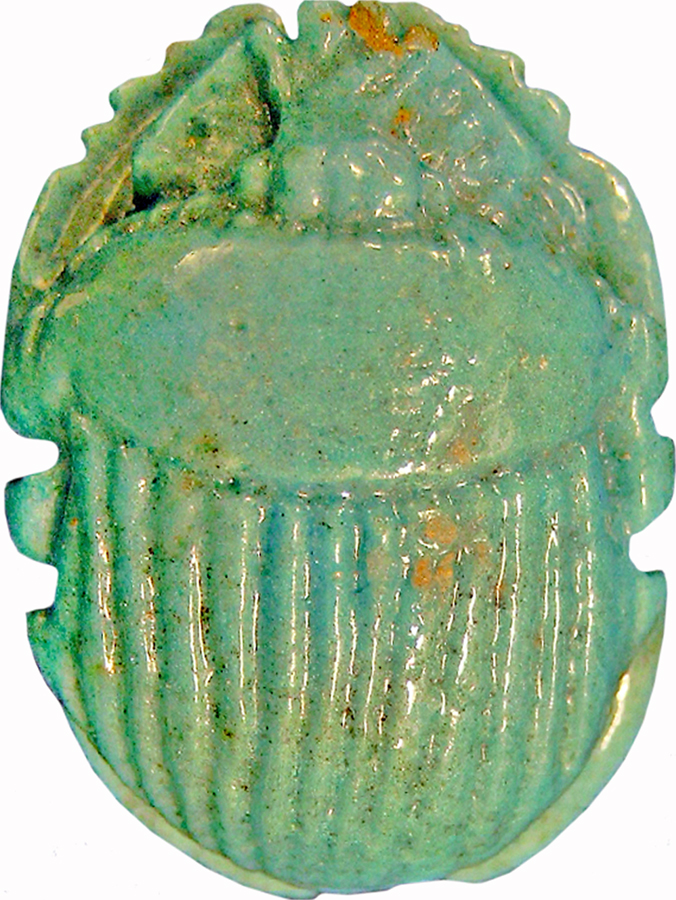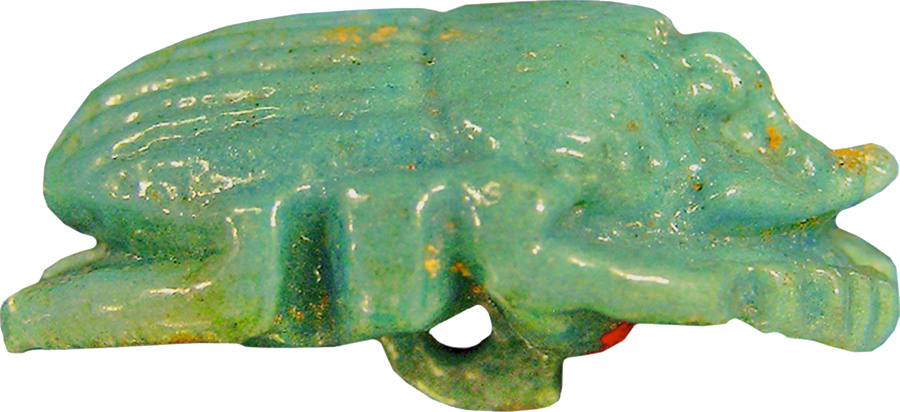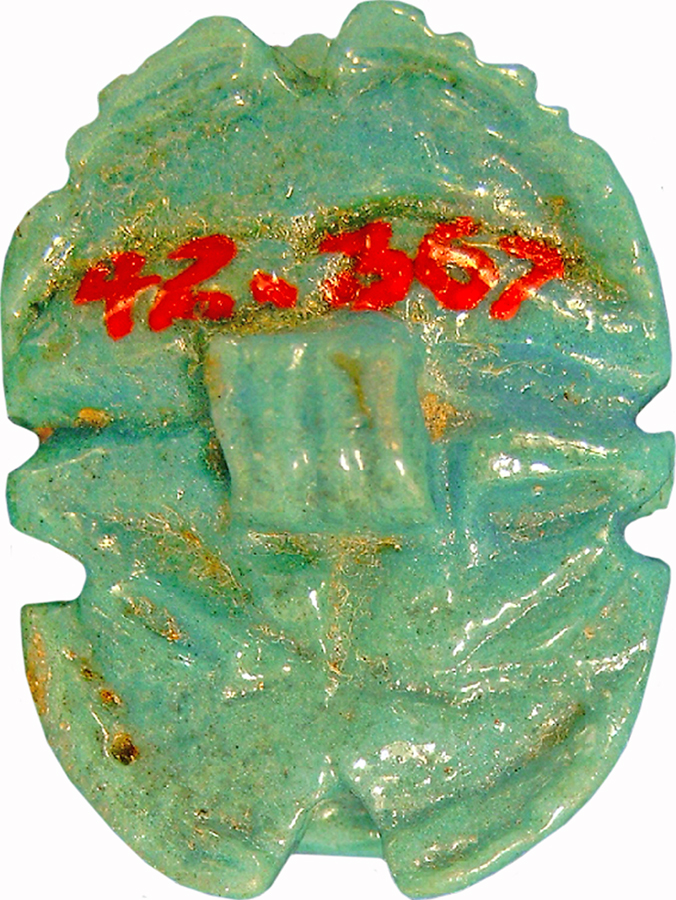Naturalistic Scarab
(Ancient Egypt and Nubia )
This naturalistic faience scarab has a high back with a detailed design of deeply incised hatch lines on the wing cases. It has irregular line flow, the pattern is unevenly spaced, and the proportions of the top are balanced. The bottom of the scarab has modeled body structures with an eye protruding from the center of the belly. The piece is carefully made with good workmanship.
The scarab functioned as a funerary amulet with regenerative connotations. It was originally attached to mummy bandages where it formed a part of the amulet set of the mummy.
Provenance
Provenance (from the French provenir, 'to come from/forth') is the chronology of the ownership, custody, or location of a historical object. Learn more about provenance at the Walters.
Henry Walters, Baltimore [date and mode of acquisition unknown]; Walters Art Museum, 1931, by bequest.
Geographies
Egypt (Place of Origin)
Measurements
H: 15/16 x W: 11/16 x D: 7/16 in. (2.4 x 1.8 x 1.1 cm)
Credit Line
Acquired by Henry Walters
Location in Museum
Not on view
Accession Number
In libraries, galleries, museums, and archives, an accession number is a unique identifier assigned to each object in the collection.
In libraries, galleries, museums, and archives, an accession number is a unique identifier assigned to each object in the collection.
42.367






